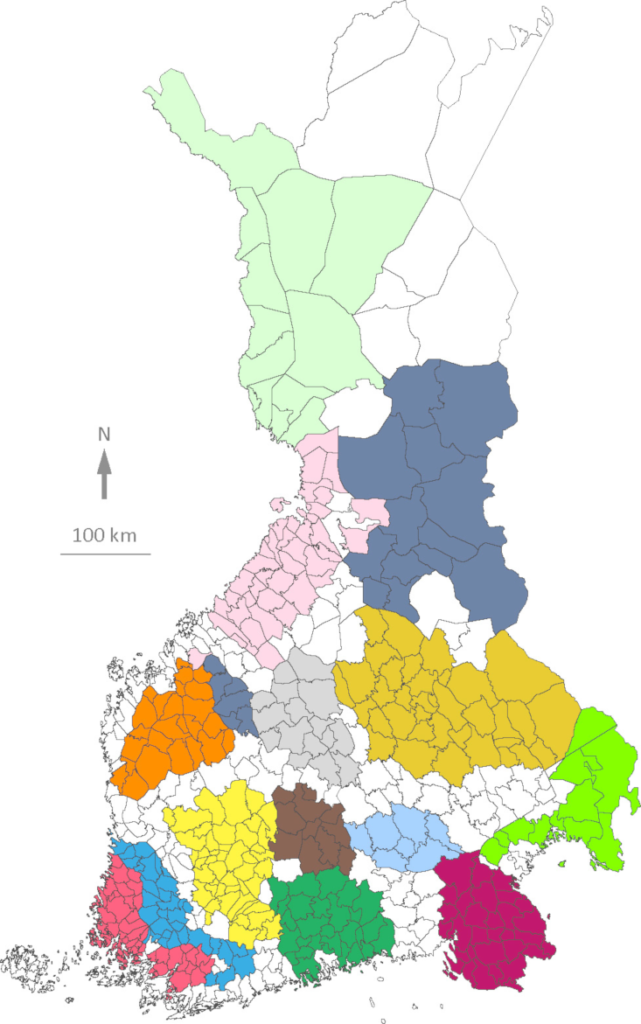
The linguistic aim of the dialect studies is to investigate the earliest stages of linguistic divergence. The well-studied and recorded Finnish area also serves as test case where we can study the applicability of methods developed in population genetics but also develop new methods specifically for language data.
How much of linguistic variation within a language the division into dialects actually explains? How strong are the dialectal differences and how much there is still “linguistic flow” between the dialects. A 100 years old extensive Dialect Atlas of Finland by Lauri Kettunen provides remarkable possibilities to study linguistic divergence and convergence and apply population genetic methods to language data.
We also study the triggers of divergence. Why are the dialectal borders there where they are and what drives the spatial patterns of linguistic variation? We study the language external factors affecting the dialect divergence by comparing the measures of linguistic differences between municipalities and dialectal areas to geographical distances, cost-distances, environmental and cultural distances and differences in the administrative histories (explaining factors). Further, as the Finnish speaking area is well studied we can achieve temporally fitting records also of for example genetic variation of the Finnish speakers.

